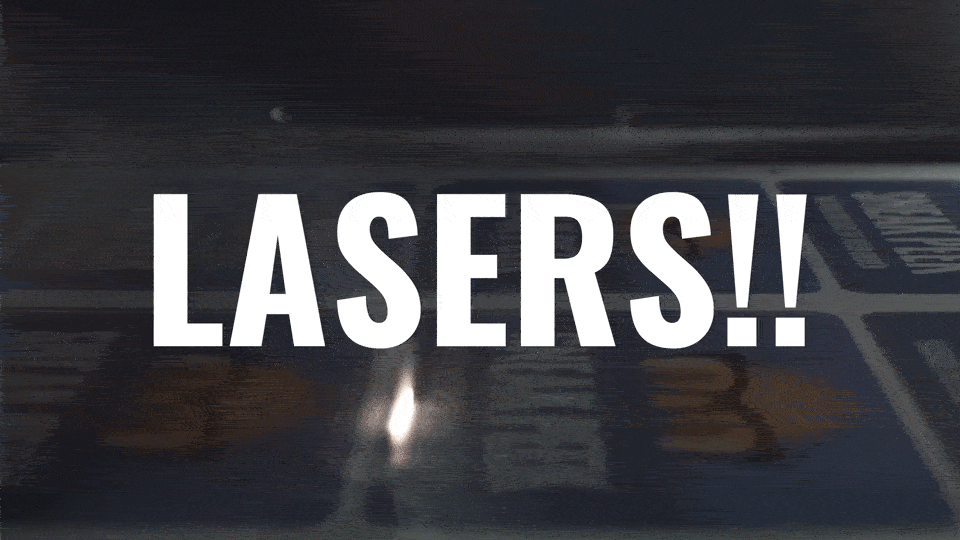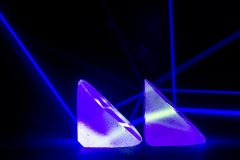Light scattering is a technology that revolutionized the airborne particle counter industry, because it is able to quickly, efficiently, and accurately determine the size and number of particles that pass through an airborne particle counter in real time. Today, it is used in the airborne particle counters that set industry standards, because it is the most accurate and efficient technology on the market.
But before we get into exactly what light scattering is, we need to understand the anatomy of a particle counter.
How Is An Airborne Particle Counter Designed?
Inside an airborne particle counter, you will find a laser sensor block. The particle counter will use a vacuum or other method of moving air to force the air through the laser sensor block, where the particles are counted and sized.
This block contains:
- Sensor housing
- Laser diode
- Sample inlet
- Sample exhaust
- Sample view volume (the area where particles pass through the laser and scatter light)
- Sensor cavity & optics
- Photodetector
But what do each of these components do?
Sensor Housing
The sensor housing protects the laser diode and other electronic components.
Laser Diode
The laser diode is what projects the laser that refracts off the particles

Sample Inlet
This is where the air is directed into the laser. When the air is pulled through the inlet, it is condensed so that the laser can accurately interact with the particles.
Sample Exhaust
After passing through the laser diode, the air is expelled through the sample exhaust.
Sample View Volume
The sample view volume is the intersection where the particles pass through the laser to be counted and sized.
Sensor Cavity
The complete open space in the center of the sensor where the particles pass through.
Photodetector
The photodetector is what determines the size and number of particles passing through the laser by detecting the intensity of light refracted.
What Is Light Scattering?
So the airborne particle counter uses a vacuum or another method to force air into the sensor housing, where the air then passes through the laser projected by the laser diode. The photodetector recognizes how much light is displaced by the laser, so it can then quantify the number and size of the particles that passed through the sample view volume.
But how is the laser and photodetector able to really figure that out?
Think about it like giving a toddler a bath.
When you fill the bathtub up, you don’t fill it up to the rim because, if you did, the water would overflow when you add the toddler.
Instead you fill it only part of the way and, when you put in the toddler, the water level rises because it has been displaced.
And, if you wanted to calculate the volume of the object that displaced the water, you could use a trusty formula to do just that.
While you probably aren’t using this method to figure out the volume of your toddler, the photodetector uses a similar process and the same principles to determine the size of the particles that pass through the laser.
This is also why it is incredibly important to use an airborne particle counter with top of the line technology, because the laser and photodetector must be perfectly tuned in order to get accurate readings.
Airborne Particle Counter Testing & Calibration
Your airborne particle counter will require regular testing and calibration to make sure the photodetector continues to read the size and number of particles correctly. Initially, your manufacturer should test and calibrate the particle counter for you. But, throughout the life of the particle counter, best practice is to test and calibrate it often.
We do recommend using an airborne particle counter with self-diagnostics, such as the Apex Z, so you can rest assured that your particle counter will alert you if something is wrong.
But you should always follow best practices and guidelines to maintain your particle counters calibration. Currently, ISO 21501-4:2018 is the best standard for calibration.
This certification standard was outlined by the International Organization for Standardization (ISO), which is a non-governmental organization that sets international standards for best practices.
ISO 21501-4:2018 outlines standards for the following:
- size setting error;
- counting efficiency;
- size resolution;
- false count;
- maximum particle number concentration;
- sampling flow rate error;
- sampling time error;
- response rate;
- calibration interval;
- reporting results from test and calibration.
We highly recommend working with a trained technician to perform assessments against known variables to test these elements. This calibration is critical in maintaining your equipment and knowing that your light scattering airborne particle counter is still performing correctly, so the testing should be done by a professional.
We do not recommend that you continue to work with a particle counter that has not been calibrated in the last 12 months, especially if it does not have any self-diagnostic options.
Which Light Scattering Airborne Particle Counter Is Right For You?
Deciding on your airborne particle counter is a fundamental and foundational component of your cleanroom contamination control strategy. In most cases where an aerosol option is required, we’d highly recommend using a light scattering airborne particle counter, because the technology is simply the best currently available to count and size particles.
But your ISO classification, cleanroom size, use, and more determine which particle counter is right for you. If you already have infrastructure and systems in place, certain airborne particle counters will integrate better, whereas if you’re starting from scratch, there are other options that might be better. The flow and zones of your cleanroom also make a big impact on this decision.
The good news is that you do not need to make the decision on your own. We have an incredible team of professionals trained to help you identify exactly which particle counter would be right for you. Let us help you determine which airborne particle is right for you and your cleanroom.


